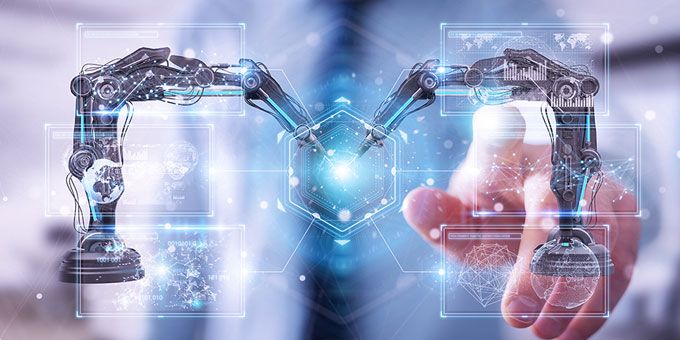In an era where automation is no longer a luxury but a necessity, the Robot Software Market stands as the invisible architect behind the machines reshaping our world. Valued at USD 7.77 billion in 2022, this dynamic sector is projected to skyrocket to USD 45.54 billion by 2030, growing at a compound annual growth rate (CAGR) of 23.9% from 2023 onward. This surge is not merely numerical; it reflects a profound shift in how industries operate, from the humming assembly lines of manufacturing to the precision diagnostics in hospitals. Robot software—encompassing algorithms for control, AI-driven decision-making, sensor integration, and inter-robot communication—serves as the brain enabling robots to perform complex tasks with unprecedented autonomy and efficiency.
At its core, robot software transforms raw hardware into intelligent systems. Consider simulation software, which allows engineers to virtually test robotic behaviors before physical deployment, slashing development costs and time. Navigation and mapping software, powered by AI, enables autonomous mobile robots (AMRs) to weave through warehouses like digital ghosts, optimizing paths in real-time. Data management tools crunch sensor inputs to predict maintenance needs, while vision and recognition software equips drones with eagle-like perception for surveillance. These components are segmented broadly by software type, including predictive maintenance, fleet management, AI and machine learning suites, cybersecurity protocols, and middleware SDKs that facilitate seamless integration.
The market's segmentation reveals its versatility. By robot type, industrial robots dominate in structured environments like factories, handling repetitive tasks such as welding or assembly. Service robots, on the other hand, cater to softer realms—think customer service bots in retail or hospitality assistants in hotels. Autonomous guided vehicles (AGVs) and drones extend this to logistics and aerial monitoring, while surveillance robots bolster security in defense applications. Deployment modes further diversify the landscape: on-premise solutions offer control for sensitive sectors like aerospace, cloud-based options provide scalability for SMEs, and hybrid models blend both for optimal flexibility.
End-use industries paint a vivid picture of adoption. Manufacturing leads, with software optimizing production lines amid labor shortages. The automotive sector leverages it for precision assembly, reducing defects by up to 30% in some cases. Healthcare benefits from surgical robots guided by AI for minimally invasive procedures, while retail and e-commerce use fleet management software to automate inventory in sprawling fulfillment centers. Transportation and logistics see AMRs cutting delivery times, and even BFSI employs bots for secure data handling. Regionally, North America holds sway, fueled by R&D powerhouses like NVIDIA and IBM, military investments, and diverse industries from pharmaceuticals to agriculture. Asia-Pacific is the growth engine, with China's manufacturing boom and Japan's Industry 4.0 initiatives propelling adoption, while Europe navigates regulatory hurdles with innovation in cobotics.
What drives this meteoric rise? Rising labor costs and workforce constraints top the list, particularly in North America and Europe, where aging populations and wage pressures push firms toward automation. The International Labour Organization highlights how manufacturing and logistics face acute shortages, making robots not just efficient but essential for competitiveness. Industry 4.0's embrace of IoT connectivity amplifies this, enabling real-time data exchange, predictive analytics, and agile supply chains. In the Asia-Pacific, government incentives and R&D collaborations—such as Singapore's smart nation push—accelerate digitization. North America's military applications, from reconnaissance drones to mine-clearing bots, add another layer, with defense budgets pouring into advanced software.
Yet, growth is not without headwinds. Cybersecurity vulnerabilities loom large, as interconnected robots become prime targets for hacks. The EU's NIS2 Directive mandates rigorous risk assessments, while GDPR compliance in healthcare and defense sectors hikes costs and delays rollouts. Economic uncertainties, including supply chain disruptions, further challenge deployments, demanding robust infrastructure that many SMEs lack.
Opportunities, however, gleam on the horizon. Robotics-as-a-Service (RaaS) emerges as a game-changer, offering pay-per-use models that democratize access. SMEs can scale without massive upfront investments, while vendors unlock recurring revenue through cloud updates. This model thrives in manufacturing for flexible production and logistics for dynamic routing, fostering a subscription economy in robotics.
Looking ahead, trends like edge computing for low-latency decisions and open-source frameworks such as ROS (Robot Operating System) promise collaborative ecosystems. Human-robot interaction evolves with natural language processing and collision avoidance, ensuring safe cobotics. Ethical considerations—bias in AI, job displacement—will shape regulations, but the outlook is optimistic: robot software will streamline everything from pick-and-place operations to material handling, driving digital transformation.
The competitive arena buzzes with innovation. ABB Ltd.'s planned 2026 spin-off of its robotics division signals focused agility, while NVIDIA's March 2025 launches—Isaac GR00T N1 for generalist robotics, Jetson Thor for edge AI, and Omniverse SDKs—redefine simulation. Teradyne's collaborative arms integrate seamlessly with middleware, and Siemens AG pushes predictive maintenance via MindSphere. Acquisitions abound, like CloudMinds bolstering AI portfolios, underscoring a landscape where software prowess dictates survival.
In conclusion, the robot software market is the linchpin of tomorrow's economy, turning sci-fi visions into daily realities. As industries automate, this sector won't just grow—it will redefine productivity, safety, and innovation. Stakeholders ignoring it risk obsolescence; those embracing it stand to lead the revolution. With a projected USD 45.54 billion horizon, the question isn't if, but how profoundly it will integrate into our lives.





Comments